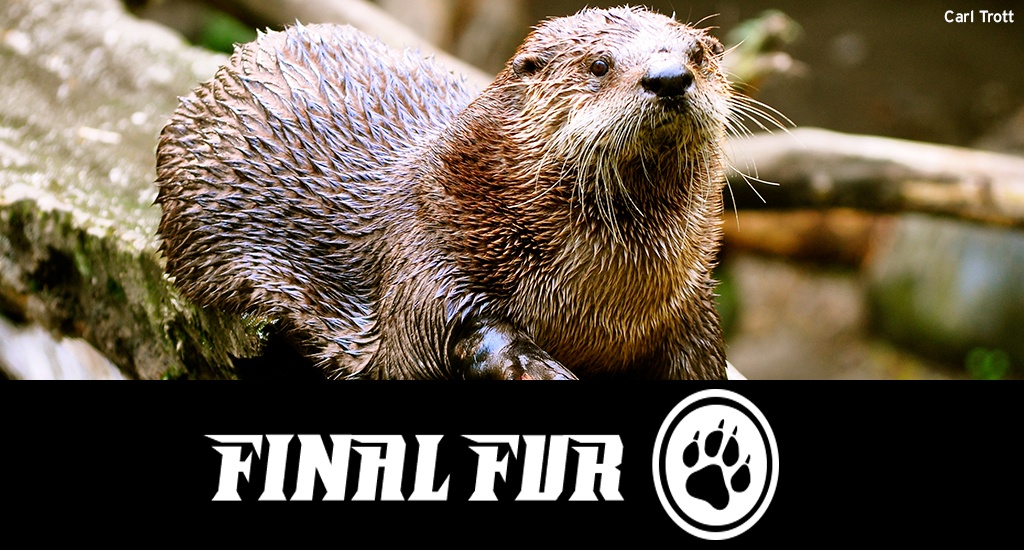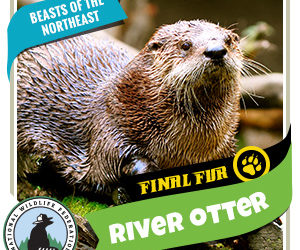We have much more to do and your continued support is needed now more than ever.
Road to the Final Fur: And the Winner Is…

The mighty river otter blew the competition out of the water! Swimming past the cardinal, great horned owl, Atlantic puffin, sea turtle, and finally the arctic fox. This crafty critter takes home our National Wildlife Week prize of… well… bragging rights.
So what exactly makes this champion so fierce?
Champion’s Physique
Speed. Agility. Flexibility. All perfect qualities for our star! Their thick, protective fur helps keep them warm in cold waters while their short legs and webbed feet allow for faster swimming. A long, strong tail helps propel them through the water while their long whiskers detect prey in dark or cloudy waters.
Winner’s “Hometown”
In or out of the water, the competition was no match for the river otter. From ponds, marshes, and lakes to rivers, estuaries and marshes, they thrive in cold, warm or even high elevation areas—as long as the habitat provides adequate food. Female river otters give birth in dens found along the water’s edge. Often these dens are burrows originally excavated by other animals such as beavers, and sometimes have underwater entrances. Otters will den in hollow logs or brush piles along the water’s edge too.
Fun Facts
- Although you won’t see it, river otters can close their nostrils to keep water out during long dives
- They can stay underwater for as much as eight minutes
- On land they can run at speeds of up to 15 miles per hour—they can slide even faster
Conservation Status
North American river otters were hunted and trapped extensively for their fur in the 19th and 20th centuries. Unsustainable hunting and habitat destruction caused a major decline eliminating river otters from portions of their range. Thankfully, conservation and re-introduction efforts are helping populations to recover. Habitat destruction and water pollution still puts these animals at great risk.
How We Help
These charismatic mammals depend on clean, freshwater ecosystems for their homes and for their food, which is why the National Wildlife Federation fights to protect water resources across the country. In addition to our work protecting watersheds and wetlands, both of which serve as river otter habitat, the National Wildlife Federation has also built coalitions around the country dedicated to clean water. These programs stretch from the Mississippi River delta to the Great Lakes, with plenty of stops in between.
Celebrate the 2017 National Wildlife Week “Road to the Final Fur” champion with a symbolic adoption!






















